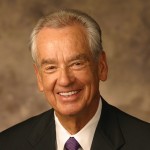MLM Network Marketing Training -The Evolution of MLM and Network Marketing- Part 1
THE EVOLUTION OF MLM:
A good starting point is this history about the evolution of MLM, “The History and Truth of Network Marketing,” by Greg Stewart, from MLM Secret, MLM Truth, Network Marketing Secret, Network Marketing Truth: http://www.internetnextstep.com/mlmsecret.htm
Both Amway and Herbalife have had to overcome tremendous obstacles in the form of bad publicity. While Herbalife’s charismatic founder would ultimately (and tragically) harm his own creation’s image, Amway has consistently managed to stay on-message in its wholesome family appeal, even while battling (eventually dismissed) charges of wrong-doing, early in the company’s history.
Both companies thrived the way any hugely successful MLM does: recruiting wave upon wave of distributors. That’s achieved thanks to both companies’ dazzling ability to inspire ordinary people to believe they can realize their dreams of personal and financial fulfillment come true by hooking up with Amway or Herbalife.
Another reason for these companies’ enduring success has been their ability to adapt to changes in the marketplace, and pioneering new ways to advertise: back in 1980, Herbalife founder Mark Hughes transformed his fledgling company into an overnight sensation, thanks to infomercials on cable TV. Overcoming overwhelming setbacks, effective marketing and recruiting messages, and proven business organization, have made these companies giants of the MLM industry. AMWAY
According to that same article: “. . . in 1959, former NutraLite distributors Rich DeVos and Jay Van Andel started the Amway company as the American Way of marketing products. Like many truly innovative breakthroughs, the development of true network marketing was an accident. . . . .” The article goes on to explain how some early MLM companies recruited via chain letters ” . . . by the 1930’s the U.S. post office estimated that 10 million letters were being mailed each day.
The MLM Scam.
Postal Authorities and law enforcement agencies battled the fraudulent schemes and the chain letter phenomenon began to subside in the early 1940s. Unfortunately, this scam spawned schemes which came to be known as pyramids, where money was given for the right to involve others, as no valid product which was being purchased from the company.
“In 1974, Senator Walter Mondale [D-Minnesota] declared such companies to be the nation’s number one consumer fraud.” ” . . .with no clear understanding of what constituted a legitimate use of network marketing, the Federal Trade Commission and state agencies across the nation turned their eyes to almost all network marketing companies.
In 1975, the FTC filed suit against Amway, alleging that the company was an illegal pyramid and that its refusal to sell its products in retail stores constituted a restraint of trade. “Amway spent four years and millions of dollars in legal fees to clear its name. In 1979 the FTC (Federal Trade Commission) ruled that Amway was *not* a pyramid, that its revenue was generated from the sale of its products, and the FTC acknowledged network marketing as a legal and efficient distribution system. Network Marketing exploded in the next decade.”
The MLM Structure.
***** Amway’s Company Structure: The article “The MLM Recruiting Nightmare: Find Out The #1 Reason Why 95% of All Network Marketers Fail to Ever Earn a Penny in Any MLM Program,” http://www.mlmmillionaire.com/mlm-network-marketing-recruiting.htm provides a important glimpse at how 1950s, 1960s era MLMs like Amway operated: “In the past, most MLM’ers were taught that they must emphasize product above all else. That may have been true 30 years ago when people worked programs like Amway, Mary Kay Cosmetics, Avon , and Tupperware in their local areas. “The compensation plans of those programs were built around retailing product. People sold to family and friends (their warm market) and through parties in which the product was the focus. Recruiting downline members was not a primary activity. Retailing was how most people made money. . . .”
The article goes on to note how that structure has now changed: “Most MLM plans today are far different. They pay the lion’s share of profits to those who build a sales organization of people who consume the products themselves, and who may or may not retail a small amount on the side. . . .”
Blessings…
doug Firebaugh / PassionFire Intl http://www.passionfire.com
© 2005 PFI / all rights reserved
For More MLM Training Resources click here
Home Business Success – MLM Network Marketing Training Article
MLM Success Training / MLM Leadership Training / MLM Recruiting










Speak Your Mind